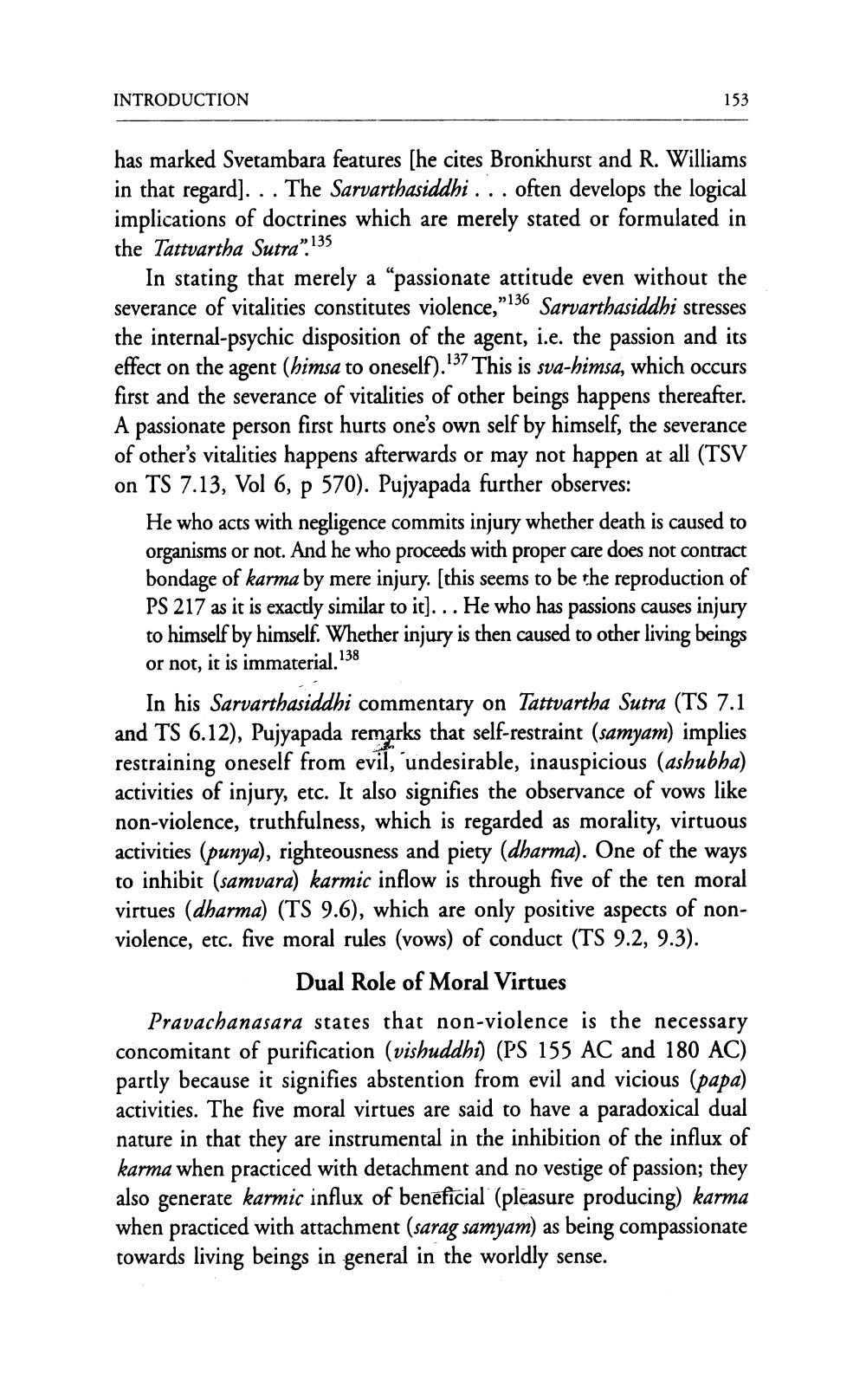________________
INTRODUCTION
153
has marked Svetambara features she cites Bronkhurst and R. Williams in that regard). .. The Sarvarthasiddhi ... often develops the logical implications of doctrines which are merely stated or formulated in the Tattvartha Sutra”. 135
In stating that merely a "passionate attitude even without the severance of vitalities constitutes violence,"136 Sarvarthasiddhi stresses the internal-psychic disposition of the agent, i.e. the passion and its effect on the agent (himsa to oneself). 137 This is sva-himsa, which occurs first and the severance of vitalities of other beings happens thereafter. A passionate person first hurts one's own self by himself, the severance of other's vitalities happens afterwards or may not happen at all (TSV on TS 7.13, Vol 6, p 570). Pujyapada further observes:
He who acts with negligence commits injury whether death is caused to organisms or not. And he who proceeds with proper care does not contract bondage of karma by mere injury. [this seems to be the reproduction of PS 217 as it is exactly similar to it)...He who has passions causes injury to himself by himself. Whether injury is then caused to other living beings or not, it is immaterial. 138
In his Sarvarthasiddhi commentary on Tattvartha Sutra (TS 7.1 and TS 6.12), Pujyapada remarks that self-restraint (samyam) implies restraining oneself from evil, undesirable, inauspicious (ashubha) activities of injury, etc. It also signifies the observance of vows like non-violence, truthfulness, which is regarded as morality, virtuous activities (punya), righteousness and piety (dharma). One of the ways to inhibit (samvara) karmic inflow is through five of the ten moral virtues (dharma) (TS 9.6), which are only positive aspects of nonviolence, etc. five moral rules (vows) of conduct (TS 9.2, 9.3).
Dual Role of Moral Virtues Pravachanasara states that non-violence is the necessary concomitant of purification (vishuddhi) (PS 155 AC and 180 AC) partly because it signifies abstention from evil and vicious (papa) activities. The five moral virtues are said to have a paradoxical dual nature in that they are instrumental in the inhibition of the influx of karma when practiced with detachment and no vestige of passion; they also generate karmic influx of beneficial (pleasure producing) karma when practiced with attachment (sarag samyam) as being compassionate towards living beings in general in the worldly sense.




